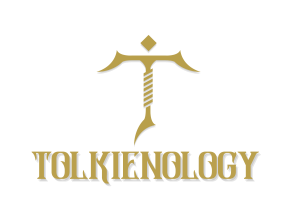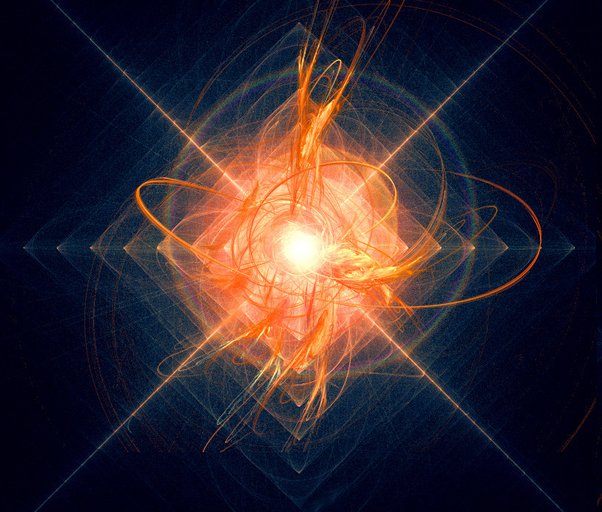In the school of classical metaphysics, it is taught that the creator gives being to the creature in a similar way to how a singer gives being to a song. There are two stages to this act. The first stage is the beginning of the song. The second stage is simply the continuation of the first stage. The song has begun, and the singer then continues to sing it, until the end. If it were me singing, “…the glory of its beginning and the splendour of its end…” may not quite compare to the Ainulindale, but that is OK, since normal singers are not by nature quite so god-like as the Ainur! It is appropriate to begin this discourse with the image of the singer as it draws a link between Tolkien’s magnificent creation myth and metaphysics.
Metaphysics is the branch of philosophy concerned with being qua being, or being as being. That is to say, physical and mathematical realities do not come of necessity under its purview. For example, it does not necessarily consider concepts like quantity, distance, location, space or time. It asks, rather, what being is, separated from those concepts. It is also concerned with the essences, or the natures of things. To boil it down, it seeks to understand what things are. It asks “What is a human?” or even, “What is an elf, or an ainu?”. What makes them what they are, in terms of defining qualities? It is concerned with being as abstracted from the physical reality of individual things; hence the name meta (after) – physika (physics).
Aristotle is credited with the philosophical theory of hylomorphism. He posited that every physical object is composed of matter and form. Every star, planet, tree, every animal and human etc has these two constituent elements. Matter is, of course, the physical part of a being, while form is the immaterial essence or nature of that thing e.g. humanity, elven-hood, ainu-ness and (after Eru’s intervention) dwarven-hood. Form makes a thing what it is and all individuals of a species share in it. As humans, the matter of our bodies is shaped, or in-formed, by the form of humanity. The same would go for elves (and their pointy ears!), with the form of elven-hood. So, according to metaphysics, there is always an immaterial universal (the form) that all particular physical instances of a group share. These individuals give physical expression to a non-physical universal reality, which applies to all members of the group and exists as part of them.
The immaterial characteristic of form is necessary to explain what differentiates physical things from each other. If the immaterial form did not exist, then everything in the cosmos would, at the most basic, subatomic level, simply be different compositions of the same matter. The undefined matter would be all that really exists, something that common sense immediately refutes. There would be nothing physical that accounts for the significant differences we observe between different categories of beings, living or nonliving. Therefore, metaphysics offers the theory of hylomorphism to explain not only what accounts for the differences between things, but also the unity of groups of things. In a nutshell, matter and form combine in a physical entity, to make it the thing that it is. We can also refer to that ‘what-ness’ or quiddity as its nature or essence.
I have heard it said by a Christian that God could have created the world that Tolkien wrote about. This may seem like an odd statement. If God is God, then surely one could say that about any author’s work. However, what the statement intended to say was that the metaphysical grounding of Eä, of Tolkien’s sub-created universe, corresponds to our own cosmos and wider Universe. Stories that speak of worlds where light and dark forces are equal and opposite do not reflect a reality that God could have created. This is because, according to classical metaphysics, God is the source of everything else that exists. Since he is perfectly good by nature, he can only create good things. We see that no evil exists in Tolkien’s universe until Melkor’s participation in Iluvatar’s theme. In the Christian tradition, it is the same until the fall of Lucifer and the subsequent corruption of humanity.
“There was Eru, the One, who in Arda is called Iluvatar, and he made…”
This is the one phrase to rule and give parameters to every other sentence J.R.R. Tolkien and his son Christopher published about Eä and Arda. Everything that happens within the legendarium after the opening 14 words of the Silmarillion fits within the metaphysical scaffolding of these words.
Eru was. He was, indefinitely, implying a continuity of eternal Being, with a capital B. He is “…the One…,” self-sufficient, lacking in no way and therefore forever happy, without need of others. “…He made…” everything, not because he needed it, but desired it. From the majestic Ainur, to the “vast halls and spaces” of “the Deeps of Time”, “its wheeling fires” and Arda. Lastly, but not least, he made the Children, the Elves and Men. He made everything, and it occurs to me to write “and it was very good” (Gen. 1:31). Whether one has Christian faith or not, for me, this is one of the reasons Tolkien is so universally beloved. His literature is grounded in the metaphysical truth that God gave and gives being to everything that exists in real life, regardless of whether one is conscious of this or not. Deep down, I think we all have some sense of this. That is why Tolkien speaks to our hearts so much. We long to grasp a little of that Transcendent Beauty which is reflected in the legendarium.
Eru made Eä, and I am convinced that God made the Universe, all that is visible and invisible. In the act of creating, God began the song mentioned in the first paragraph. In holding creation in being, he continues the song. Creation depends on the Creator for both its coming into being and its remaining in being, just as the song depends utterly on the singer at all moments for its being.
If this is the case, how is it that God is able to create? How can Eru give being to all of Eä? The answer lies in what was discussed above: form, or nature. However, one more ingredient must be added to the concoction of what makes up an entity. Being. So, let us take our most esteemed Professor Tolkien as an example. Before he received the gift of Men, he was made up of matter and form, just as described above. But these things would literally be nothing if they did not have being. Sounds blindingly simple, and it is. All physical entities, including people, are composed metaphysically of matter, form and being.
Now, depending on your beliefs, you will be more or less comfortable contemplating the existence of non-physical entities. The difference between these things and physical things is the absence of matter. Therefore, an immaterial thing would be a composition of form and being only. In Christianity, angels are an example of this type of thing. Since we are discussing Tolkien, it will be more helpful to think about the obvious analogues to angels: the Ainur.
“Now the Valar took to themselves shape and hue;…their shape comes of their knowledge of the visible World, rather than of the World itself; and they need it not, save only as we use raiment, and yet we may be naked and suffer no loss of our being. Therefore the Valar may walk, if they will, unclad…”
Those of the Ainur who have descended to Eä may appear physically, but they can discard this appearance at will. Their nature is therefore to be immaterial, but with the power, that comes from this nature, to appear physically. Elves and Men have bodies by nature (I am conscious of the concepts of fea and hroa, but for the sake of simplicity I have decided not to discuss these things, as I suspect there may be small differences between form/matter and fea/hroa), while the Valar and Maiar in Eä may take on corporality, but do not require it. All the other beings we encounter in Eä more or less fit into one of these two categories (either a creature made from matter, form and being, or a creature made from form and being). That leaves one remaining Being, with another big B: Eru Iluvatar. He is his own category.
[Melkor] “…had gone often alone into the void places seeking the Imperishable Flame; for desire grew hot within him to bring into Being things of his own… Yet he found not the Fire, for it is with Iluvatar”.
As we see in the brilliant tale, ‘Leaf by Niggle’, Tolkien never stopped niggling at his work. He was assiduous in his labours. He would select his words and phrases with utmost care. It is no accident that he capitalised the ‘B’ in the above quote. He is indicating to the reader that the “Imperishable Flame” and “Being” are linked. That brings us back to the question above about God’s ability to create. Why is he able to do so? As we saw:
- Physical beings are composed of matter, form and being.
- Immaterial beings are composed of form and being.
- In God, though he is immaterial, form is being and being is form. He is the only instance where form and being are the same thing.
God’s form, or nature, is to be. Being is in his nature, which differentiates God from every other being, with a small b.
- Small beings (creatures) HAVE being. They receive it from an external source. They do not exist by necessity, since being is not in their nature.
- Big Being (Creator) IS by nature, Being Itself (Ipsum Esse Subsistens, as Thomas Aquinas put it in the 13th century). It is its own ‘internal’ source of being. It exists by necessity, since being is in its nature.
God is able to create because he is Being Itself. He is able to pour forth that being at will to bring non-existents into existence. This, in a word, is referred to as creation. It is the gifting of being from Creator to creature. Since Eru demonstrates this ability, one can unflinchingly refer to him as God (with another capital, this time G!).
As the text of the Silmarillion implies, Melkor was seeking the Imperishable Flame in order to bring things of his own into being (“…seeking the Imperishable Flame;…to bring into Being things of his own…”). What, then, is the Flame? It is Ipsum Esse Subsistens: Being Itself. Why was he unable to find it? It was “with Iluvatar”. It WAS Iluvatar, part of what he is, by nature. Everything that exists in the Halls of Iluvatar and Eä is “kindled” by the Flame:
- (To the Ainur) “…I have kindled you with the Flame Imperishable…”
- (Concerning the music after the end of days) “Then the themes of Iluvatar shall be played aright, and take Being in the moment of their utterance…and Iluvatar shall give to their thoughts the secret fire…”
- (Concerning the creation of Eä) “Therefore I say: Eä! Let these things Be! And I will send forth into the Void the Flame Imperishable… and the World shall Be…’ And suddenly the Ainur saw afar off a light, as it were a cloud with a living heart of flame;…they knew… that Iluvatar had made a new thing: Eä, the World that Is”.
Tolkien capitalises words like “Flame”, “Being”, “Be”, “World” and “Is” to show the metaphysical link all creatures have to their Creator. It is a link of ontological dependence. Creatures in Eä could not exist without Eru Iluvatar. They could not exist without Something which is Being by nature, or Being-Essential. They could not exist without the Flame Imperishable.








